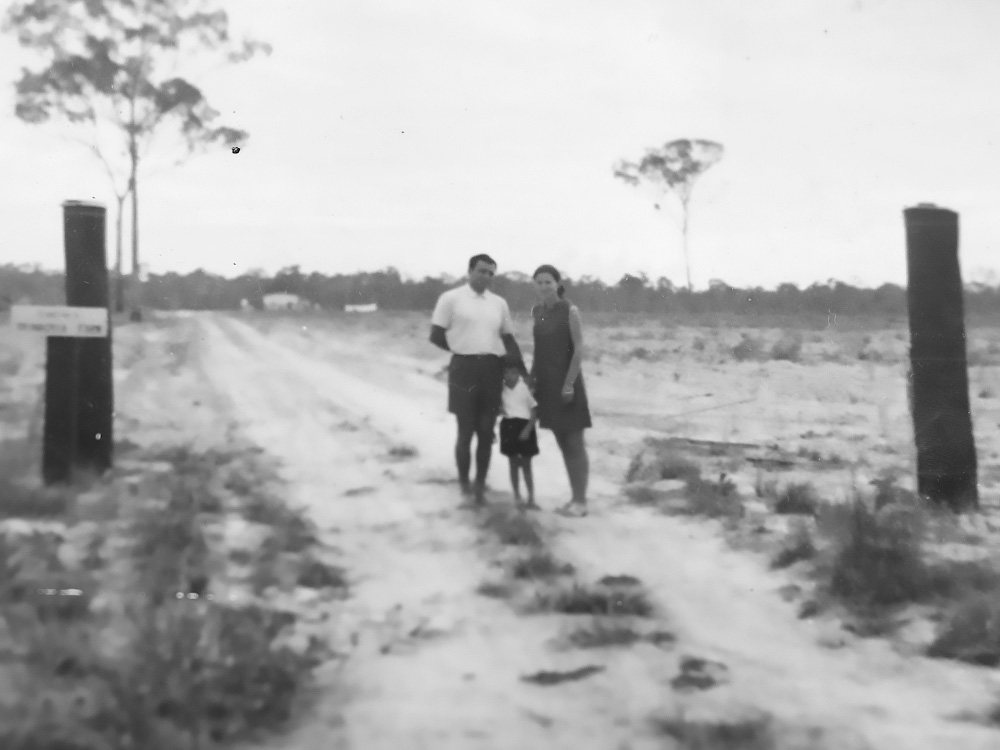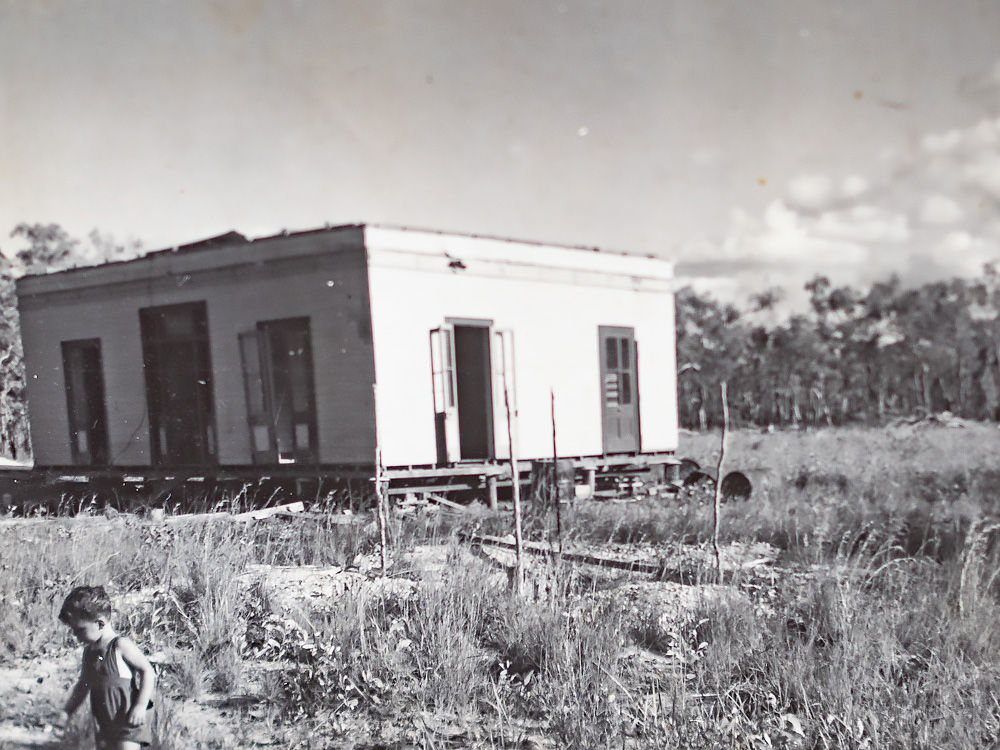Being in the dry tropical zone
My early childhood art influences, that would later effect my early adult explorations, were on a rural property in the dry tropics of Far North Queensland. The period of 1967 to 1970 were the years of solo explorations on Trinacria farm.

In the quietude of isolation, my parents found solace and connection in the occasional visit to artist friends. Bruno and Lorraine, along with their son Barron, served as a cultural lifeline to our family, newly settled in foreign soil. Bruno, an Austrian émigré and a portraitist by trade, was the first to instill in me a painterly sense of belonging—a rural humanism that transcended the mere geography of our existence.
Their home, a testament to the pioneering spirit, lay on the outskirts of the burgeoning Townsville. Here, homeowner builders crafted their existence with scant resources. I vividly remember the timber ‘thunder box’ or Dunny, the bungalow that stood as a makeshift shelter amidst the ‘gradually’ emerging new house, a yard strewn with the detritus of construction, derelict cars, and the quintessential laundry tub. The nights were animated with the passionate discourses between my father and Bruno, their voices a nocturne to the day’s end.
The land was dotted with thorny Chinese apple trees, a stark contrast to the manicured urbanity I found so uninspiring. It was in this liminal space, stretching from Townsville to Rollingstone, that I began to cultivate an early appreciation for the Australian dry tropics. The region’s mild winters gave way to seasons of arid winds, heralding the build-up to the rains. And with the wet season’s arrival, a delicate fragrance would permeate the air, a gentle reminder of nature’s cyclic dance.
Dry tropics kid explores timber.
With the boundless curiosity of youth, I roamed the dry tropical landscape, my eyes unclouded by the ambitions of pioneering farmers. Enchanted by the labyrinthine timber, the natural grottoes wove a tapestry of adventure, beckoning me to uncover pathways to their hidden hearts, far greater in length than my small frame could measure.
In those halcyon days of liberty, the watchful eyes of omnipresent parenting were a world away. My father’s voice would occasionally pierce the stillness, a gentle reminder of the tether to home, but for the most part, I was left to my own devices. It was in this realm of untamed beauty that I was free to engage with the natural world through a lens of wonder, my youthful innocence serving as the only compass I needed.
Philosophical renderings of nature.
As a child, my way of understanding the world was through the vibrant interplay of color and shape. It was a departure from the rigid, rule-based thinking that adults often used. The unique character of my surroundings sparked my first deep thoughts, thoughts that would stay with me forever. Instead of learning from structured lessons, I learned from the world around me, from the heat and the life of the dry tropics that filled my senses and became a part of who I was. I saw the natural world as a living, breathing companion, and this connection shaped my thoughts and feelings. Later, when I moved to the wetter regions of Australia, this bond with nature began to express itself in my art, through swathes of color and the rhythms of sound.
Dirt tracks, gullies and the sands of time.
Amidst the earthen tapestry of dirt tracks and gullies, beneath the vast canopy of the heavens, time unfolded not as a linear stream, but as a series of sacred pauses, each moment an eternal interlude between the ‘before’ and ‘after’. It was a realm where time seemed to hold its breath, suspending the ordinary in the extraordinary.
There, in the solitude of a gully, I would become lost to the world, my hands sifting through the ancient coloured sands as if they were the very grains of time itself. Hours would pass, marked not by the relentless march of a clock’s hands, but by the sun’s slow dance across the sky.
A voice would occasionally ripple through the stillness, its distant call floating back to me through the quivering gold-green leaves, a gentle reminder of the world beyond my sanctuary. In these moments, I became acutely aware of the numinous nature of time, a social construct far removed from the relentless ticking of a clock, a measure of existence deeply felt rather than mechanically counted.
